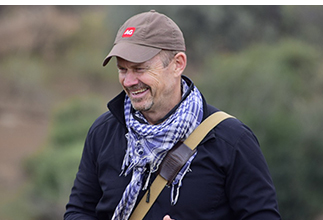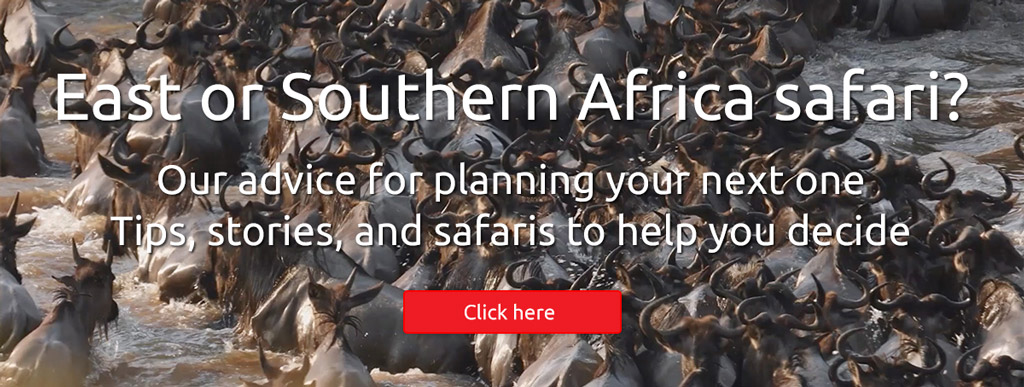
This is a copy of our weekly email newsletter. Subscribe here to receive the newsletter.
Bountiful Busanga Plains + epic photos + Moremi magic

Last week I mentioned a rather hilarious gorilla encounter in Uganda’s Bwindi Impenetrable National Park. That got me thinking of the difference between encounters with habituated and non-habituated gorillas. Chalk and cheese. Of course, both types of encounter are with wild gorillas, but the habituation aspect of gorilla encounters in Uganda and Rwanda does result in a different experience.
During a recent expedition to Odzala-Kokoua National Park in Congo-Brazzaville, I was lucky enough to encounter non-habituated western lowland gorillas on several occasions. All of these encounters were while waiting patiently – often for many hours – in observation towers on the edge of forest clearings known as baïs. The gorillas will often leave immediately if you disturb them, sometimes screaming blue murder – a cacophony that assaults the eardrums and echoes in the confines of the baïs.
Of course habituated gorilla encounters are one of the world’s best wildlife encounters – which I recommend highly – and they raise significant amounts of money to keep mountain gorillas safe. That said, having thoroughly enjoyed both types of encounter for what they are, I found the ‘wilder’ experience in Odzala-Kokoua refreshing and less intrusive.

Simon Espley – CEO, Africa Geographic
From our Editor – Taryn van Jaarsveld

And now for something completely macabre… In ancient Greece, the Scythians would sew together the scalps of their enemies to make cloaks. This is one of the earliest accounts of such morbid behaviour. But there is a creature in Africa that can one-up the Scythians – by wearing a backpack made up of the bodies of its victims.
Acanthaspis petax is an assassin bug found in Kenya and Tanzania that disguises itself by covering its body in corpses. The bug is often seen moving around with this “backpack” on its abdomen – usually made up of the empty corpses of ants. Researchers think this acts as olfactory camouflage for when the bug is hunting other ants, or as a visual distraction for larger creatures trying to hunt the bug. At least this “defense mechanism” proves very effective in deterring predators…
Below, check out Irene Amiet’s travel diary from Busanga Plains, the jewel of Kafue, and don’t miss the magnificent photos from this week’s Photographer of the Year selection.

Story 1
https://africageographic.com/stories/busanga-plains-jewel-of-kafue/
BUSANGA PLAINS
Busanga Plains in Kafue NP is brimming with wildlife, yet not overwhelmed by tourists. Read Irene Amiet’s travel diary from this Zambian safari spot
Story 2
https://africageographic.com/stories/photographer-of-the-year-2024-weekly-selection-week-5/
MAGNIFICENT PHOTOS
Check out our Photographer of the Year entries for Week 5. Enter for a chance to win a safari and to have a lion research collar sponsored in your name
 TRAVEL DESK:
TRAVEL DESK:
Let us take you on an adventure. Fancy seeing all Namibia has to offer? Or perhaps experiencing the glamping safari of your dreams? Check out these once-in-a-lifetime safaris:

 WATCH: Odzala-Kokoua National Park is an epic destination for experiencing Congo-Brazzaville’s secretive wildlife species such as western lowland gorillas and forest elephants. Camp Imbalanga, nestled under the shady canopy of enormous trees, is an unfenced forest camp a short walk from Imbalanga Baï – one of many baïs in the park. (01:54) Click here to watch
WATCH: Odzala-Kokoua National Park is an epic destination for experiencing Congo-Brazzaville’s secretive wildlife species such as western lowland gorillas and forest elephants. Camp Imbalanga, nestled under the shady canopy of enormous trees, is an unfenced forest camp a short walk from Imbalanga Baï – one of many baïs in the park. (01:54) Click here to watch
For more videos celebrating Africa, check out our videos here
To comment on this story: Login (or sign up) to our app here - it's a troll-free safe place 🙂.![]()






